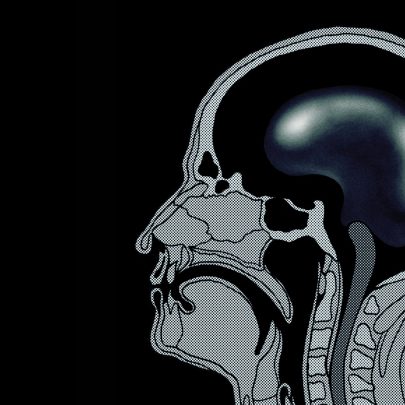Dec 13, 2017 Schools
You can find our Best Schools in Auckland 2018 article here.
With a worsening staff shortage, increasing student mental-health issues, chronic underfunding, and a fractious relationship with the Education Ministry, Auckland’s secondary schools are at breaking point.
For more up-to-date advice, see our 2018 guide to choosing the right school in Auckland.
You can find a full list of Auckland schools and their academic results at the bottom of this article.
Around 65 per cent of the students in Years 11, 12 and 13 at Macleans are studying for Cambridge exams, with the remainder doing NCEA. The co-ed state secondary at Bucklands Beach invariably ranks among New Zealand’s best for academic success. Bentley believes its whanau house model is one reason for that. “They belong to something within the school and identify with it. There’s an extra layer of support for the kids.”
Students are assigned to one of eight whanau houses in Year 9, with around 60 kids moving up through each house each year for five years. Named after inspirational New Zealanders — Hillary, Te Kanawa, Batten — the houses have their own identities, assemblies, mascots, captains, and leaders. Inter-house competitions, held three lunchtimes a week, range from athletics to cross-country and music. “It certainly helps the core academic progress of the kids,” says Bentley.
But as successful as the whanau house model is, it is dwarfed by one imperative. “Priority number one through to 10 has got to be get quality teachers. Nothing else matters in the school. Nothing.”
The trouble with teaching in Auckland
That’s a problem, and not just for Macleans; Auckland faces a crisis of teacher availability. The number of graduates entering teacher training nationally declined from 17,065 in 2010 to 10,965 in 2015. Almost half of all new teachers are leaving the profession within five years. Forty-five per cent of the current workforce is over 50 — and 21 per cent of those are teachers in their 60s and 70s. Teachers who have migrated from the UK are filling some of the gaps, but far from all.
Mike Williams is principal of Pakuranga College and president of the Secondary Principals Association of New Zealand (SPANZ). With the rambunctious lunchtime sounds of his own school in the background, he says the shortage is particularly bad in science, maths and technology. “Schools are surviving — just — but we’ve used all of our normal back-stops. Probably every secondary principal I know has put pressure on someone who was retired, or about to retire, and convinced them of the merits of teaching for another year — or two — or of going part-time.”
In Auckland, the teacher shortage is compounded by the high cost of living; experienced teachers in provincial areas are no longer moving here for jobs, which may pay several thousand more, because it no longer makes financial sense.
The majority of applicants for teaching jobs in Auckland are now graduates, young teachers who are still flatting or in other flexible living arrangements, Kiwis returning from overseas, and new migrants. “Now that’s great for a little while — lots of young and enthusiastic teachers is good for a school,” says Williams. “But the other place we’re all suffering is those young teachers, three or four years down the track, might want to have a family, buy a house. The reality is in Auckland you can have a family or you can have a house. If you’re a teacher, you’re dreaming to think you can have both of those.”
A national Post Primary Teachers Association (PPTA) survey of secondary principals earlier this year found the average number of teaching job applicants is the lowest it’s been since 1998. One in 11 classroom positions draws no applications at all. In Auckland, 30 per cent of classroom positions attract no suitable applicants.
Read more: Auckland’s teacher shortage is biting hard in Papakura
Melanie Webber, who teaches English and media studies at Western Springs College and is also the PPTA’s junior vice president and spokesperson on Auckland issues, says the government is in denial about secondary teacher supply. “You will hear them say, even now, there’s a small problem in certain areas. It’s not true. It’s across the board. And principals are funny about saying, ‘I don’t have an appropriately trained person to put in front of this class.’ You don’t want to stand up and say, ‘I’ve got someone who’s just okay, I’ve got someone who’ll fill the gap, they’re better than nothing.’ No principal on Earth wants to stand up and tell parents that.”
Fifteen principals, including Byron Bentley, spelled this out last year at a meeting with then-Education Minister Hekia Parata, then-Secretary of Education Peter Hughes, the Teachers Council and the Qualifications Authority (NZQA). “The message we were trying to get through was you’ve got to get the quantity of teachers up,” says Bentley. “Bringing them in from overseas is a short-term solution, but there’s no short-term fix for this because you’ve got to get these people through and train them. But hurry up … [and] incentivise them to hell.” He shakes his head. “That was the clarion call.”
Despite this, he says, little has been done, and the number of students going into teaching remains too low to fix the problem. “In no way is it going to feed the machine, especially in Auckland where you’ve got huge demand. The rolls are all rising on this influx of population, and it’s flowing through already into the secondary school sector. The crisis is right here, now.”
It’s a crisis for which there’s only one answer: teachers must be paid more. A trained teacher with a four-year degree currently starts on $52,000. It takes them six years to get to the top of the scale, which is $76,000.
Another way of attracting graduates to teaching in the first place? The government could wipe a fixed amount off their student loan for every year they teach.
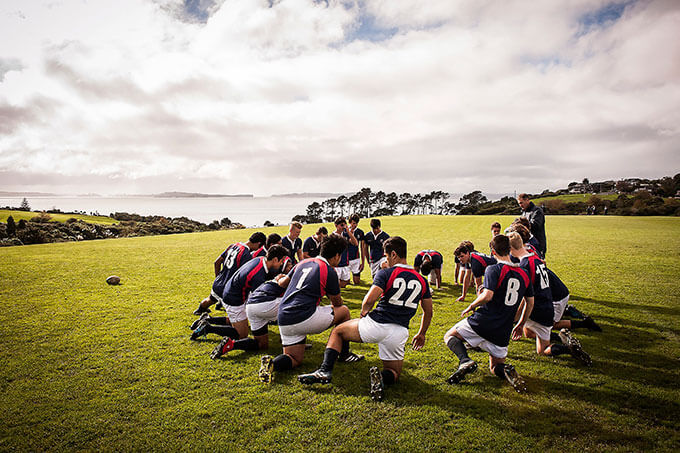
The myth of a free education
Back at Macleans College, someone has prepared a timetable for my three-day visit. Bentley takes me on a tour of the school, its grounds and facilities such as the gym and assembly hall, which has been cleverly designed to break down into smaller spaces, extending its usefulness. The campus is set into the south-eastern edge of Macleans Park. Past the fields are Eastern Beach and the blue sea beyond. The grounds “flatter to deceive”, Bentley says, pointing out the actual school boundaries. He’s right: it’s hard to distinguish where the grounds end and the park begins, creating a lush and verdant illusion of a school property that stretches to the sea.
It all seems quintessentially Auckland, down to the pukeko strolling languidly along the rugby field’s western touchline. Up the path, the school has opened a new $2.5 million multi-sport playing field with an artificial surface and sophisticated drainage. It was funded entirely by Macleans in a process Bentley describes as “a piece of cake” compared to managing the school’s other projects in conjunction with the Ministry of Education.
The ministry says on its website that education is free for the 5-19 age group, but Bentley says it’s time to “stop the weasel words about [parental] ‘donations’ and call it what it is: user-pays. It ain’t free. It’s not. You’re never going to fund it enough. Modern schools need all this high-quality technical gear, you’ve got to protect the plant, so we’ve got about 70 CCTV cameras around. Mainly because people walk through here all the time outside of hours. All those things cost a fortune. Where’s it going to come from?”
Focus groups with parents run by the PPTA last year found they now accept they have to pay fees. And Macleans’ 400 foreign fee-paying students, who make up just over 15 per cent of the roll, contribute an extraordinary 39 per cent of the school’s annual income. They directly subsidise an enormous range of services it couldn’t afford otherwise, including relief teachers and extra-curricular activities. Macleans’ international department has 10 full-time staff just to help manage these students and their educational and pastoral needs. The school would take more if it could, but finding suitable homestays for the students has become harder over time. ?The yearly “donation” for New Zealand students is $590, but even in this relatively well-off part of town about 20 per cent of parents don’t pay it. “Just because you’re a wealthy community, how are you supposed to extract money out of them?” Bentley asks. “Do you lift your fees? That presumes you are offering a superb service on all fronts. You hope you’re doing that, but there is a limit to how much you can expect parents to pay.”
Predictably, there’s acceptance by political parties that free education is over. When it comes to this somewhat socialist ideal and actual legal statute, Labour’s education spokesman – now Education Minister – Chris Hipkins, reckons the former government was dancing on the end of a pin. “By law, kids shouldn’t be denied their education based on their parents’ ability to pay. But let’s face it, that’s happening. If parents can’t afford to pay, their kids are being denied opportunities within school and within the school’s programme, and that’s creating unfair advantage and disadvantage. The basic reason we adopted free state education in the first place was that it shouldn’t matter who your parents are or how much money you’ve got in your family … because education is supposed to be the great opportunity, the great social leveller.”
Hipkins says he’s not willing to give up on the promise of a free education “but we’ve got to start from accepting the reality — that’s not what we’ve got now”. Given how closely successful education outcomes are tied to other social factors such as housing and incomes, it’s hard to know if Labour can return New Zealand to truly free education either.
Top Auckland secondary schools by pass rates:
The general view of those interviewed for this story (apart from former Education Minister Nikki Kaye) is that the sector has been chronically underfunded by successive governments. MP Catherine Delahunty, spokeswoman for the Greens, believes it got worse under eight and a half years of National.
“They don’t see funding state schools as their top priority. They’re always looking at ways in which our schools can self-fund or how privatisation can be supported.”
In its first Budget, in 2009, the former National government gave an extra $35 million to private schools, says Delahunty. “They’re prepared to prop up Wanganui Collegiate, which should stand on its own merits, but when it comes to state schools in Auckland, a lot of them have been struggling for a very long time. Underfunding is a very bad way to treat the education system, because we pay for it later on in many other ways in our society.”
Last year, the government handed out $41 million to private schools. Its argument for doing so when so many state secondary schools are struggling is that private schools actually save the public money, because without them the full cost of educating their students would be borne by the taxpayer. But if someone chooses to spend up to $30,000 a year on their child’s private education, opting out of a “free” state system, that is a personal decision. Shouldn’t the school be sustainable without taxpayer subsidy?
Both Labour and the Greens promised if elected to look hard at the subsidisation of private schools. But neither promised to remove it.
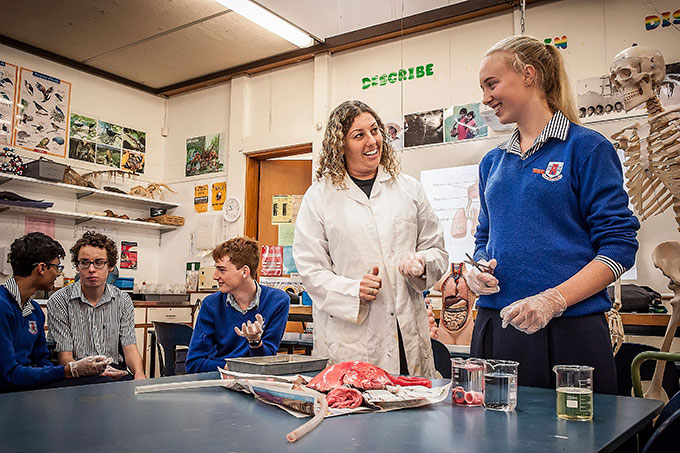
Students’ increasing mental distress
As I spend time at Macleans, observing classes, talking to teachers and students, it becomes obvious that one of the factors underpinning the school’s success is its wider culture: the whanau house system (particularly its competitive elements); the 70-plus extra-curricular activities available, from fencing to hip hop; the cultural diversity; the mutual respect between students and teachers; and, according to a survey of 60 prefects run by the school in April, the disciplinary system. “We love that there is no tolerance of stealing,” one prefect commented. Said another: “Bullying and comments on Facebook are taken seriously,” unlike other schools, “where some of our friends are scared”. Safety and the feeling of inclusion ranked as highly important: “We don’t have to worry about safety when we come to school.”
In a chat with me about their experiences at Macleans, students Rhi Ann and Jasmine are eager to demonstrate their pride in the college. “The teachers are really good,” Rhi Ann starts. You have to say that, I point out, given their form teacher is in the room. They laugh and insist it’s what they’d say anyway.
“The school really stresses being a well-rounded student,” Jasmine says. “There are so many clubs here, so many things to do.”
She wants to tell me about “these Macleans values”. “M stands for manners, A stands for Articulate, C stands for courage, L stands for loyalty, E stands for Effort — 100 per cent, A stands for authority respected, N stands for No lies, and S stands for sympathy and service.” She recites them without stumbling once. “When we get to Year 9, they teach us these values, and they really put a lot of stress on it, so we try to learn and grow into them.”
I ask how they’re personally tracking against the school’s values and there’s a long pause. “It’s a bit difficult for me to have courage, to go outside of my comfort zone,” Jasmine ventures. “But I’m working on it. I’m not really a risk-taking person, unlike someone else I know who is totally crazy.” I’m not sure if this is directed at Rhi Ann, the teacher, me, or someone else. They both say they have close friends in the school, and this is really their favourite thing about it.
Have they experienced bullying? “We’re aware of it,” Rhi Ann says. “It’s been mentioned in assembly. But personally, I’ve never encountered it.” Jasmine agrees. “I don’t think I’ve experienced it at Macleans.”
Yet bullying, the ubiquity of digital technology, and academic pressure created by continuous internal assessment are together putting enormous pressure on our teens. Educators are seeing more mental health issues among students; schools are desperately aware New Zealand has the highest teenage suicide rate in the developed world.
Barbara Jones, head of counselling at Macleans, has silver hair and a professionally concerned expression. Her office is a little larger and warmer than those of the other staff, but then, students don’t come in here to be told off. On one wall there is a print of Behave, Otis Frizzell and Mike Weston’s appropriation of the Beehive matches logo. I sit on a red couch, a coffee table and a box of tissues between us. Macleans employs five full-time student counsellors, and they are constantly busy. Jones tells me there’s been an upswing in students seeking help in the past few years.
“We’re seeing kids come in, and in the health centre, too, with panic symptoms. They can’t breathe, they’re shaky, they’re having real panic attacks, and that’s horrible. Sometimes they suffer from claustrophobia, agoraphobia, depression, OCD.” Suicidal ideation? “Yes.” The school takes a “wraparound approach” to supporting distressed students, getting parents and mental health services involved. “Mental health in general is a very alarming problem. It’s scary for schools, it’s scary for families, it’s scary for the kids,” says Jones.
NCEA and the constant demands of internal assessment contribute to the pressure our kids are under. A 2015 Educational Review Office study of 68 secondary schools found that students in all schools were experiencing a very assessment-driven curriculum and assessment anxiety.
Add the impact of social media and secondary teachers are rightly worried about the amount of pressure on students, says SPANZ’s Mike Williams. At Pakuranga College, he has three and a half full-time-equivalent counselling positions and a team of paid and volunteer youth workers to support a roll of around 2250. “You’re a teenager and you do something a bit dumb? Twenty years ago, a couple of people saw you do it and you live with a bit of a ribbing for a few days and then it’s gone. Now, someone took a picture of it and they put it on the internet and the entire world knows what you did,” Williams says. “Now the dumb thing has suddenly become everyone’s business.”
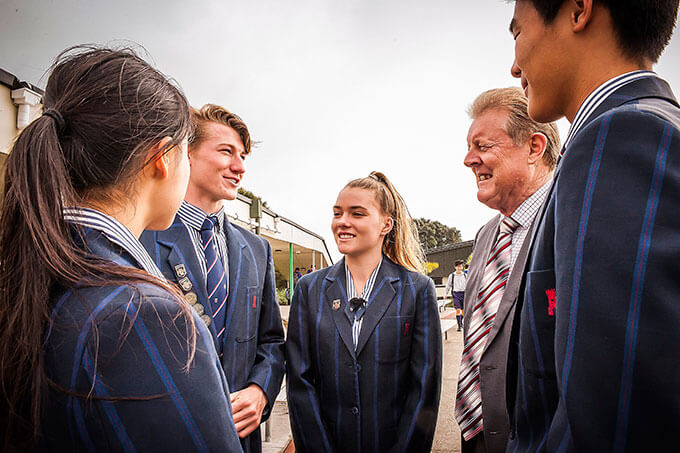
Schools collaborating together?
One of the Ministry of Education’s major new programmes is creating Communities of Learning (CoLs), groups of education and training providers working together. The idea is that by collaborating, schools can share best practice, lift standards and better plan for future educational needs. Funded under the government’s Investing in Educational Success initiative, a CoL establishes leadership roles inside each group of schools to help in the process. There is general agreement the concept of CoLs is a good one, but also that the implementation has left a lot to be desired.
The Greens’ Catherine Delahunty sat on Parliament’s education and science committee. “Nikki Kaye told me that [creating CoLs] was all about breaking down competition. So in one breath, they support privatisation and charter schools, and in the next it’s, ‘Oh, we’re breaking down competition.’
Delahunty says CoLs are a long way from the “silver bullet” of educational outcomes the government is hoping for, and teachers are generally unimpressed. “They’re very cynical at the moment, teachers on the ground, about the point of this.”
“I think that the concept’s good,” Bentley says. Then: “I can’t recall principals or boards ever being consulted about it, just this is going to happen, it’s going to be good. Well, who said? What’s good about expecting a principal to be out of their school running a whole lot of other schools? It’s hard enough running your own school. The way it’s been handled is very poor. It’s been dictated to us by someone in Wellington. They don’t get how it works in the real world.”
The current model provides money to employ a principal, a CoL leader, and for a few positions below, but no project money to execute collaborative ideas. Given the paid roles are clearly and prescriptively defined, critics say this erects a barrier to true collaboration, as there’s no flexibility for schools to choose their own CoL structure, or money to implement their ideas.
Williams agrees, both that it’s a noble ideal and that it has been poorly executed. “The previous minister was adamant that the leaders of these communities would be our best principals; it would be a career progression for them. The reality is it’s not a career progression. It’s a fixed-term job for a few years. More importantly, that’s not what motivates principals to collaborate. Principals don’t work in an environment where they’ll collaborate better if that person’s getting paid more and they’re the boss. We collaborate for principles and ideas. It would have a lot more traction with a different leadership model and some resourcing to do something.”
Wasn’t the whole philosophy behind Tomorrow’s Schools to encourage competition, not collaboration? “Yes. But at heart we are collaborative, we want to work together, and we find ways of doing it,” Williams says. “This missed the point, thinking that the [way] to make us collaborate was paying someone more money. It’s a very business-world way of looking at it.”
Williams says people are struggling to find ways to make CoLs work, but they’re getting there, slowly, because they do actually want them to succeed. “Already the hard, fast rules are being blurred. We will see more of that as time goes on.”
Whetu Cormick, national president of the New Zealand Principals’ Federation, suggests there may be a bigger agenda, such as turning them into buying collectives in order to leverage cost savings. “It’s about schools pooling their resources and saving money. Somebody — a politician I can’t reveal — likened the model to the DHBs [district health boards].”
Cormick wants to know “the true intent” for CoLs now and into the future. “Because our parents, Minister, would probably be really interested in knowing what is the greater plan for Communities of Learning.”
There is a fear that CoLs, coupled with the latest amendments to the Education Act, are a Trojan horse for super schools, a signpost of a policy future not being publicly disclosed. The amalgamation of many, disparate schools into super schools, run by super principals and boards of trustees, is something that the education unions and many others in the sector vehemently oppose.
Bentley believes super schools are bad news. “The strength of New Zealand education for decades has been community-based schools. Everyone gets in behind it, hopefully it’s well led, well managed, and away you go. You’ve got your own identity.”
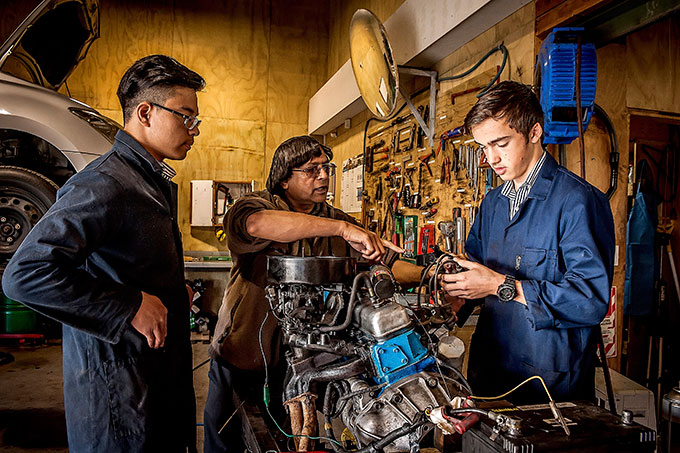
National government’s legacy
National forced through a series of systemic changes that have proven unpopular within the sector. These include National Standards in 2010 and recent changes to the Education Act, which allowed the minister to combine school boards, a principal or board to be in charge of more than one school, and the establishment of Communities of Online Learning (COOLs), which can be privately owned and run but receive public money.
Educators here point to the example of the United States, where there has been growth in the number of online charter schools, but learning outcomes have been very poor.
While tension between the profession and the ministry has always existed, is the relationship now becoming dysfunctional? Bentley and Williams, both principals of large Auckland secondary schools and facing all the unique issues that entails, agree the ministry has a tendency to be autocratic. It operates what Bentley calls a “low-trust model”.
“It’s been around for years and years, [under] successive governments. They don’t trust schools to do things so [government] will have to come in over the top and sort it out. We’re saying you don’t need to sort anything out. We’ll manage it, thanks. We’ve been managing our schools for years, we can handle it.”
Delahunty says it got worse under the former National government. “I think there are a lot of teachers and teachers’ organisations that have felt really excluded by the government from critical education debates. The leaders of the education sector do their very best to maintain a relationship with government — they have no choice, but it should not be like that. [The ministry should] have a genuine conversation about assessment and the teacher shortage. The concept that we’re behind you, we’re listening to you, and we have expertise and resources to support you, I don’t think that relationship exists any more. The ministry should be a seat of expertise and support, rather than a centre of management and control.”
Labour’s new Education Minister Chris Hipkins believes the ministry has lost its way. “They’re getting public servants or business people from outside of education, and as a result there’s a disconnect between the way they are operating and the day-to-day realities of being in a school.”
Back at Macleans, before the lunch bell, Byron Bentley is telling me what he really thinks: “Yeah, we’re idiots! Don’t ask us. What would we bloody know? Do what we tell you. So we’ve got this mentality now, where you get all this shallow thinking that’s based on ideology, not research. Like the ‘modern learning environment’, where you’re going to put a whole lot of teachers in a big space, and they’re all going to teach classes and hold hands and do ring-a-bloody Rosie . Where’s that come from? It’s got no foundational research, it’s got no foundation in practice. We know it’s a load of rubbish, yet they keep trying to [put us] in buildings with these massive big spaces. We’ve been a victim ourselves, with our science and technology block two years ago. We had a right royal set-to with them. We said, ‘We’re a whanau house school, we’ve got the big open spaces now that we use. We want classrooms and laboratories and workshops that have a teacher with their students, so they can work the magic.’
“Teacher-led instruction is the mantra here, and it always will be. Not student-led. Good teachers will always find out what their students need.
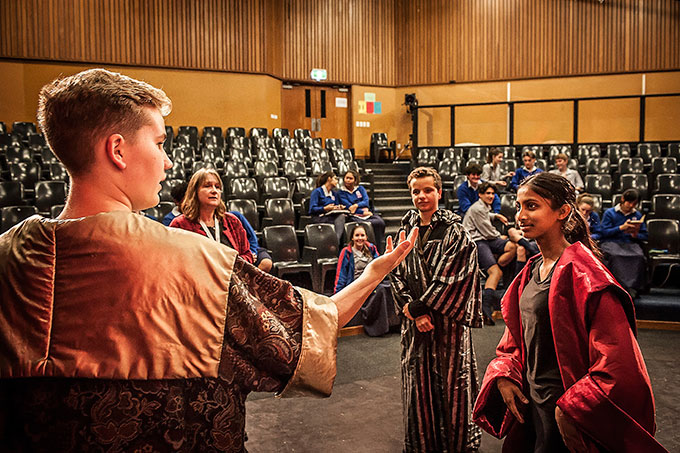
Back to the future
Where does all this leave our secondary schools? What will they look like in 10 years’ time? It depends who you ask.
Mike Williams believes decisions need to be made now about what Auckland’s schools will look like in the future. “How big are we prepared to let secondary schools go? What does a 3000-student secondary school look like, if that’s what’s around the corner? What infrastructure do you need to support that many young people? We need to do some really serious thinking about Auckland schools in particular, because that’s where most of the overcrowding is coming from. Have we got the right mix of schools, are we putting the right schools in, or are we just going to keep going up to super schools?”
Chris Hipkins’ view is more apocalyptic: he predicts higher unemployment because school leavers won’t be equipped with the necessary skills. “If we continue down the road the [former] government have got us on, we’ll see a future workforce that is simply unable and unprepared to cope with the realities of the future.”
Melanie Webber is more sanguine, and suggests a return to not letting students attend schools out-of-zone is one answer. “I’d love to see everyone supporting their local community school, and going … ‘My kid is going to be fine there, and I want to be making the situation better for everyone with my kid being there rather than making it worse.’”
Auckland secondary schools’ academic achievement:
This article was first published in the July- August 2017 issue of Metro.
The academic achievement table is an updated version of the one which appeared in the magazine.
Our data analysis was done by AUT’s Media+Experience Lab (MaX Lab), an international, interdisciplinary and cross-institutional collaboration involving researchers and designers from NZ, China and the US. MaX Lab aims to foster economic growth through user experience design innovations. It focuses on smart learning, information, product, service and system design plus big data analysis and graphical visualisation.




